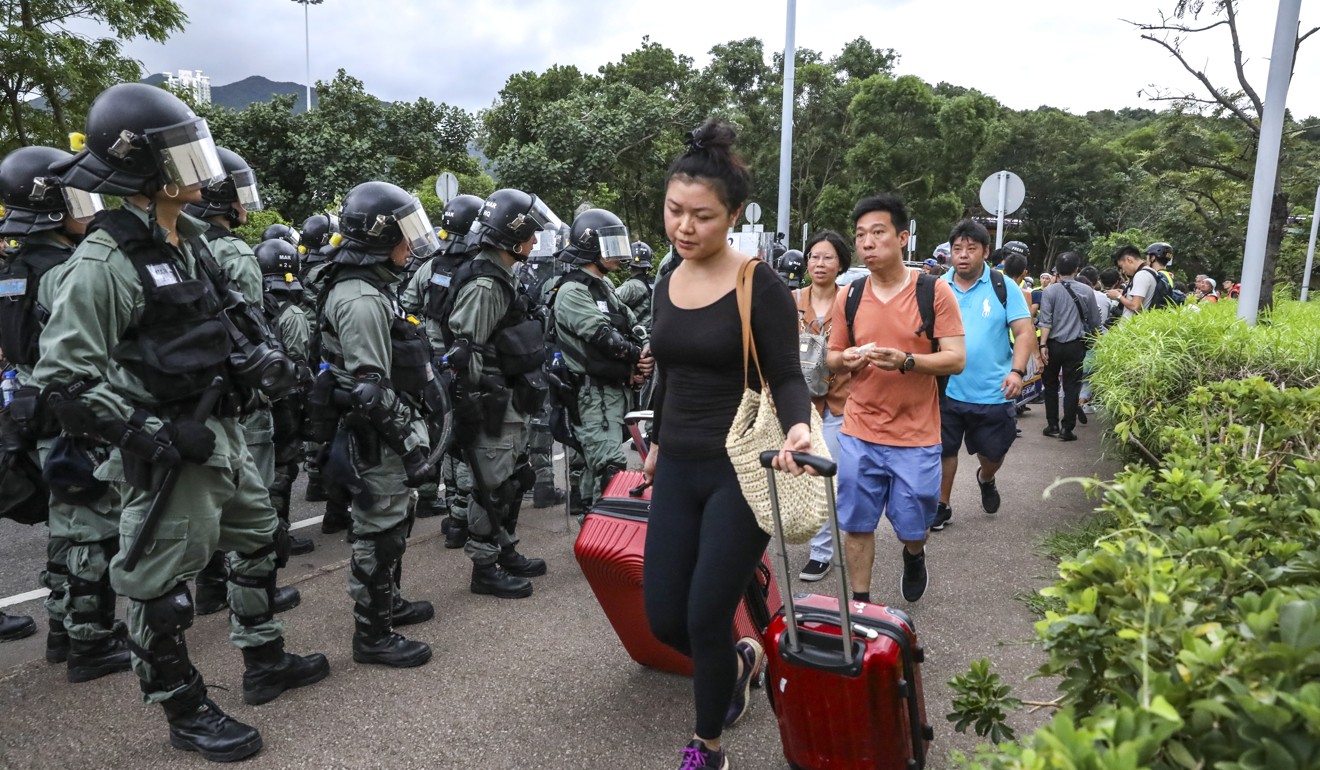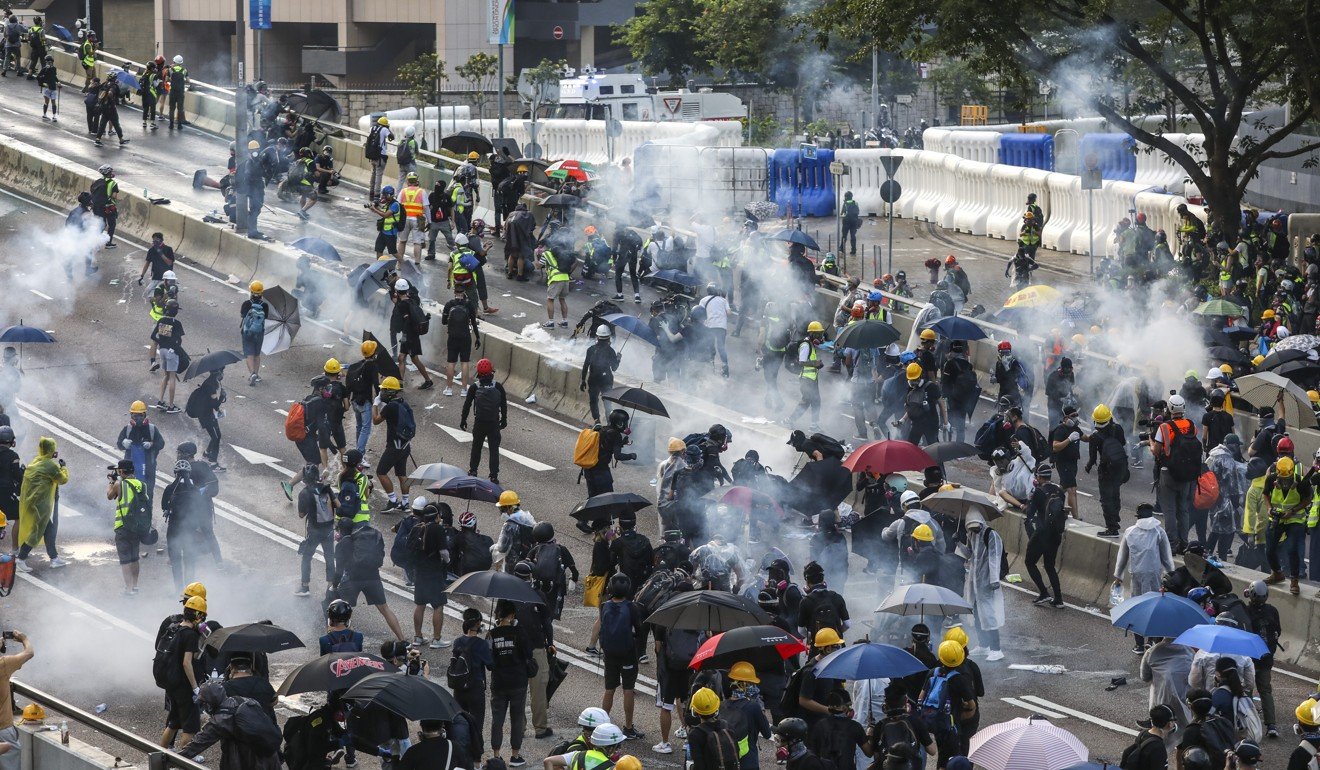
Hong Kong Airlines to reduce number of flights as protests take toll on carriers
- Nearly one in 10 tickets on stricken airline no longer available under major flight cancellation programme
- Carrier’s financial woes compounded by weeks of demonstrations suffocating passenger demand
Hong Kong Airlines will cut 7 per cent of passenger flights until the end of the year as it responds to a sharp fall in demand that is deepening its financial problems.
The city’s third-largest airline said it would shrink its business in an attempt to limit losses from thousands of customers cancelling Hong Kong travel plans.
Unrest over 15 consecutive weekends has caused the number of tourists coming to the city drop sharply. Some 40 per cent fewer people visited in August, Financial Secretary Paul Chan Mo-po said last week.
The airline will also slash the number of available air tickets for sale by 9 per cent.

“Travel demand has declined sharply due to recurring issues in Hong Kong. In response to the current market conditions, we have temporarily reduced our capacity,” a spokeswoman for Hong Kong Airlines said.
Cathay Pacific Airways, which controls three of the city’s four passenger airlines, said last week it would no longer expand by 6 per cent over the winter as it grappled with the protests and the impact of pressure from Beijing – factors which have led to steep declines in business on mainland China routes.
Addressing the cut in flights, the company said it had left open the possibility of more reductions, hinting at putting staff on unpaid leave, but stressed there was “no plan” for job cuts.
Hong Kong airport posts biggest drop in a decade – 851,000 fewer travellers
“We will continue to monitor the situation closely and make further adjustments if required, including internal arrangements to support our operation in the coming months,” a company spokeswoman added. “Hong Kong Airlines remains committed to offering a sustainable travel service to our customers.”

The oil price spike sent airline stocks tumbling, with Cathay Pacific falling 4 per cent on Monday.
Jet fuel is the single biggest variable cost for an airline and typically accounts for a third of a carrier’s overall expenditure.
Hong Kong Airlines’ training centre opening postponed amid city protests
On average, Hong Kong Airlines has 50 passenger flights departing the city daily. In total, Hong Kong International Airport handles 450 departures carrying passengers every day, half of them from Cathay Pacific Group airlines.
Recently, the airline has been cancelling flights on an ad hoc basis, which a source said would form the basis of how it would trim its flying schedule.
A flight each to Sapporo, Hanoi and Male, in the Maldives, was cancelled on August 14. By August 15, a Sapporo and Seoul flight was axed. On August 16, a Hanoi and a Male flight did not fly.
Is Hong Kong Airlines set to bail out of long-haul flights completely?
Hong Kong Airlines, which is backed by the heavily indebted Chinese conglomerate HNA Group, faces an increasingly difficult financial position.
Its money troubles became public late last year over concerns it was unable to repay a large amount of debt.
Earlier this year it endured months of boardroom turmoil, sudden management changes and a shareholder battle for control of the ailing airline.
For now, the airline still awaits possible investment from new shareholders to inject much needed cash into the privately held company, however, investing in Hong Kong in general has become unattractive with the ongoing protests.

Hong Kong Airlines reported a 13 per cent decline in travel for August.
Meanwhile, the Cathay Pacific Group announced an 11.3 per cent drop in passengers travelling in August compared with the previous year, including a 38 per cent slump in arrivals to the city, leading to a hiring freeze and cost-cutting.
Cathay Pacific suspended Dublin flights over the winter, removed daytime flights to Paris and Frankfurt and trimmed the number of flights to Vancouver, New York JFK and Washington.
Who has gained from Hong Kong airport’s record drop in passengers?
Cathay Dragon suspended flights to Medan, Indonesia, and one daily flight each to Beijing and Tokyo.
The changes to Cathay’s flight schedules would take effect at the end of October.
Hong Kong Airport said over the weekend it shed 851,000 visitors in August, a decline of 12.4 per cent on the previous year, during the busiest month of the year for air travel.
Foreign airlines have also made changes. Australia’s Qantas cut its Hong Kong capacity by 7 per cent, by switching to smaller widebody planes and, as of last weekend, United Airlines was set to slash the number of seats it sells to the city by 25 per cent by the winter.

